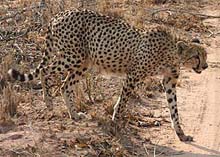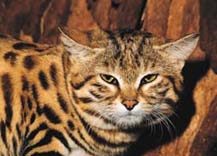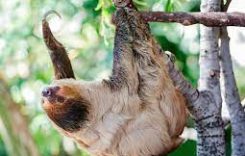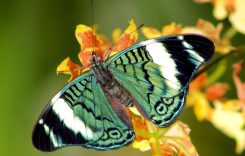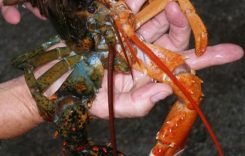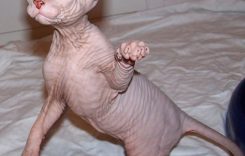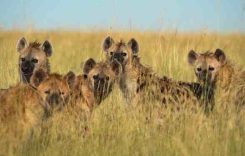Wе all love little fluffy pets. It doesn’t matter whether it’s a rabbit, a puppy, a kitten, or a baby horse. But sometimes an animal is born ending up bald. Some people are attracted to bald animals and they grow them deliberately.
And that doesn’t matter as long as they are treated well. Unfortunately that isn’t always the case. Here are some of the crazy hairless animals found within a domestic setting.
Hairless Rabbits
What you see is real – no trick photography, nor has the bun been shaved or artificially modified! This amazing little character is quite rare and was accidentally bred here in Australia.
Hairless bunnies pop up as spontaneous mutations fairly frequently but very often die early on in their life.
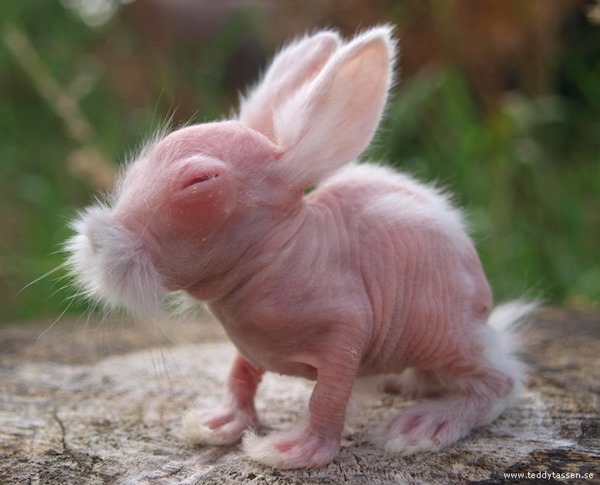
Many in the pet world are a bit horrified by this as to date furless bunnies that have showed up spontaneously in the pet population (and there have been many) usually die very early in their life suffering from all sorts of health problems. Besides this hairless animals might be OK in heat but they’d bake like a lobster in the sun with no fur to protect their delicate skin.
Bald Baboon
Lonely baboon … the rare hairless female was spotted in Zimbabwe
The animals usually hang around in troops of up to 250, but this female is forced to feed alone – after losing all her hair. The unfortunate creature was spotted by British-born gran Ann Warner near her new home in Zimbabwe.
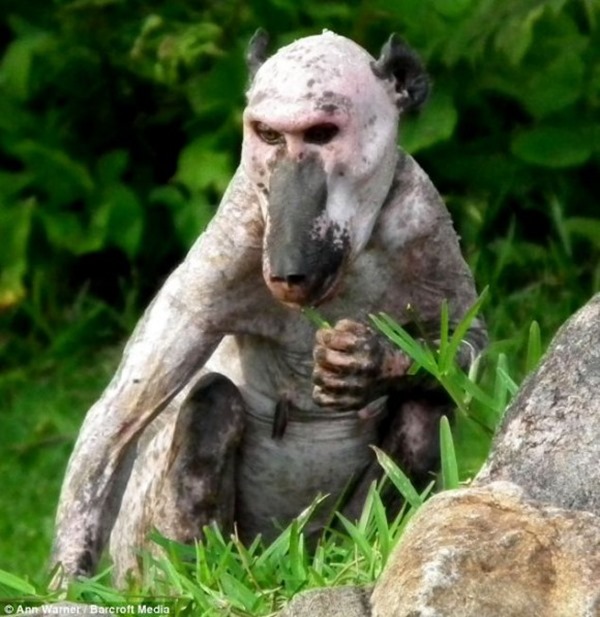
Ann, 65, who is originally from Hartlepool, said: “Baboons are not the loveliest looking of animals at the best of times. “(She) gave us quite a fright on first glance.”
It’s not known what caused the baboon to go bald – but monkeys and apes sometimes lose their hair in rare cases of alopecia, just like humans.
Hair-raising … other animals have shunned the unfortunate monkey
This hairless baboon was seen being forever alone in Zimbabwe. All the other baboons won’t let this one join in their baboon games because of her appearance.
Hairless Cat
Cats are typically fuzzy, soft little creatures that enjoy a good snuggle (once in a while, on their terms)! There are at least two genetically different strains of hairless cats out there forming the Sphynx breed and the Peterbald breed. There are several breeds on top of this but I have yet to discern if they’re playing with the same gene or are distinctive. Either way people love these little naked kitties.
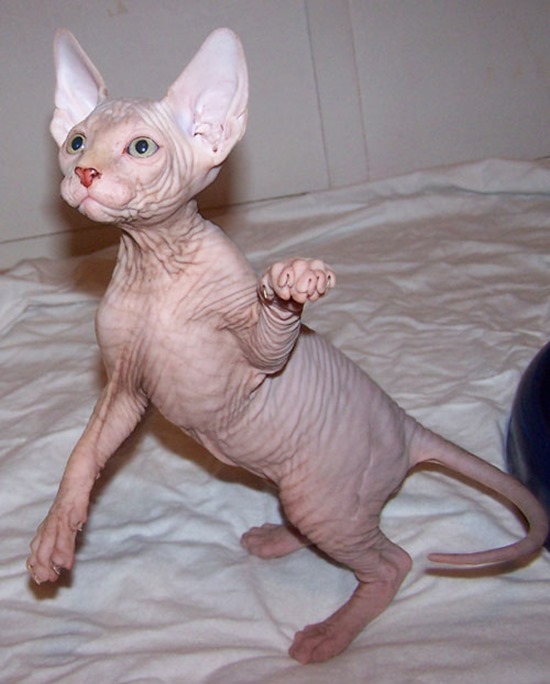
They’re obnoxiously friendly (or maybe just using your lap for heat – we may never know) and often are even colorful. Badly bred kittens may have heart issues later in life or other health problems while well bred ones are generally pretty healthy. In fact one of the world’s oldest cats, Grandpa, was a sphynx and he lived to be 34 years old! Not bad for a cat rescued from the Humane Society.
Hairless Squirrel
The fur loss is caused by a fungus or mange mites that spread easily from squirrel to squirrel in their winter dens. On frigid days, unrelated squirrels seek out the coziest dens and squish together. Most squirrels aren’t harmed by the fungal infection, the mites or the fur loss. They’ll regrow fur in the coming weeks. More pix after the jump.
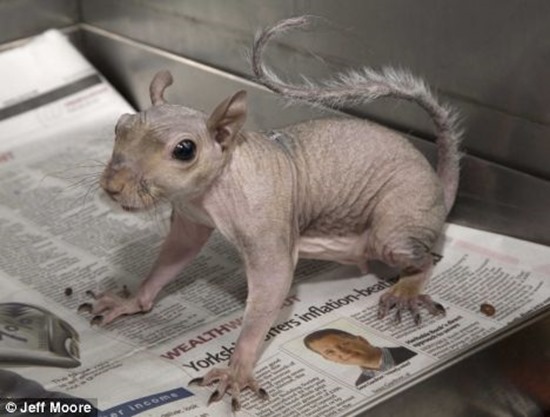
The animal first experiences hair loss over the chest and shoulders. The mange then eventually spreads over the entire body, causing the animal to become nearly bald.
Naked: Smoothie the squirrel has baffled vets
Hairless Parrot
While much of the media is touting Oscar the cockatoo as the world’s ugliest bird, the near-naked creature with nothing more than a tuft of feathers on her head is enchanting people world-wide by storm as she gives real meaning to the adage that true beauty comes from within.
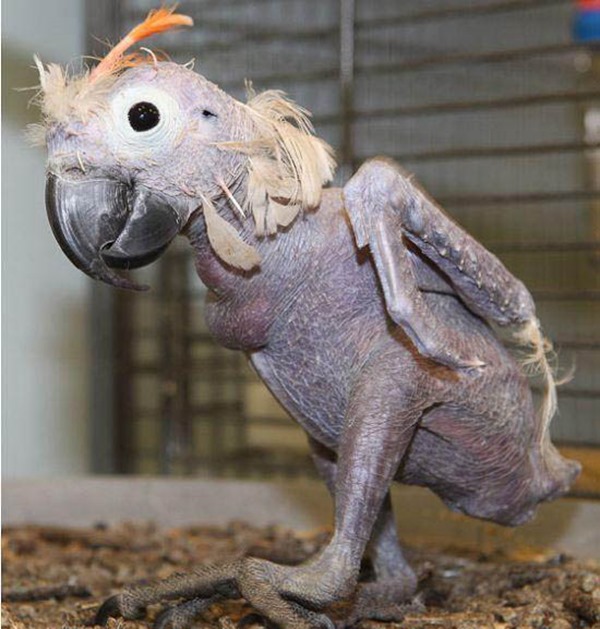
“She looks like a bald chicken. There’s no getting away from it.” said one of her keepers, adding, “I love this bird.” What’s even more miraculous about this special bird is that Oscar was diagnosed with Beak and Feather Disease — a virus highly contagious to other birds — and given 6 months to live. That was 12 years ago.
Hairless Horse
Nobody is quite sure what causes a horse to be hairless. The breeds that seems to pop up as hairless most often are Drafts and Ahkal-Tekes. A hairless horse requires a lot of specialized care that a regularly coated horse does not. They can get fungal infections and are way more prone to sun burning. Without the protective coat their skin dries out easily.
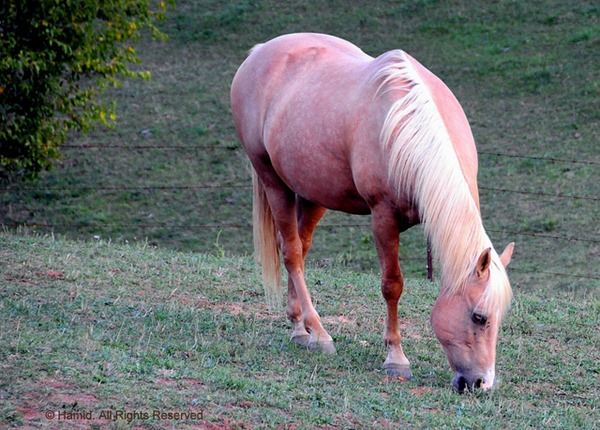
Brindle coats, curly coats, spotted coats, shiny coats… I’ve seen them all. However, I’ve never seen a hairless horse before! While it’s more common in cats and dogs, hairless in horses is quite rare. Part of this is because the mutation that causes hairlessness in horses tends to be fatal.
Below are several hairless horses including Bluebell the $25,000 “hairless wonder” and Wild Nell who was billed as the “india-rubber skinned mare (both from the 1890s) and an unidentified hairless horse from the 1900s.
Hairless Dog (Obama offered Peruvian dog as White House pet)
U.S. President-elect Barack Obama has promised daughters Malia, 10, and Sasha, 7, a new pet for the White House. But Malia is allergic to most breeds, he said on Friday as speculation swirled about the dog the family would choose. Owners of the Peruvian Hairless Dog, a breed dating back 3,000 years and depicted in pre-Hispanic ceramics, say it is perfect for kids who are sensitive to dogs.”They do not cause any type of allergy and are very friendly and sweet,” said Claudia Galvez, 38, director of the Friends of the Peruvian Hairless Dog Association.
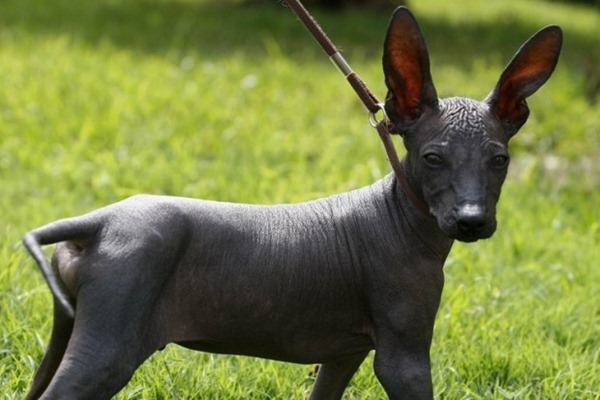
The Peruvian Hairless Dog is a hairless dog breed that originated in Peru. Its entire body is hairless only having short hair on top of its head, on its feet, and on the tip of its tail. An absolutely hairless is much preferred in Peru. The skin color of Peruvian Hairless Dog can be copper, chocolate-brown or elephant grey mottled.
Extra Naked Snakes
Biologists have found five specimens of an exceedingly rare amphibian, Atretochoana eiselti, in the Brazilian Amazon, reported national media on Tuesday (31)2012. The specimens, a species with an elongated cylindrical body and smooth skin, belonging to the family of so-called caecilians, were found near the construction site of a hydroelectric plant on the Madeira River in Porto Velho, capital of Rondônia state in Northern Brazil.
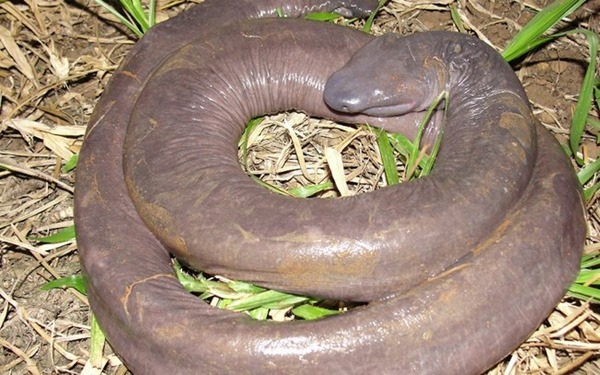
Biologists consider the animal very rare, since only two specimens of the species were known to exist before this and there was no clear information about the area where those originated, except that they came from “South America.” The biologists found six of the amphibians – they returned three to the river, one died and they sent two others to research centers.

